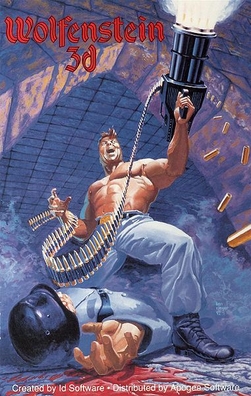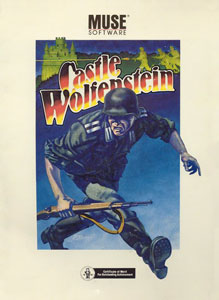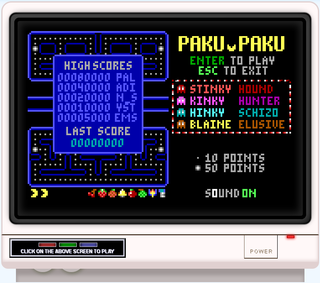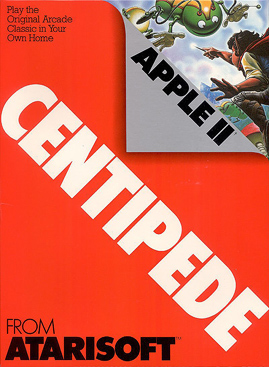
Atari ST is a line of personal computers from Atari Corporation and the successor to the company's 8-bit home computers. The initial model, the Atari 520ST, had limited release in April–June 1985, and it was widely available in July. The ST was the first personal computer with a bitmapped color graphical user interface, using a version of Digital Research's GEM interface / operating system, from February 1985.

Commodore International Corporation was a Bahamian home computer and electronics manufacturer with executive offices in the United States founded by Jack Tramiel and Irving Gould. Commodore International (CI), along with its subsidiary Commodore Business Machines (CBM), was a significant participant in the development of the home computer industry in the 1970s to early 1990s. In 1982, the company developed and marketed the world's second-best selling computer, the Commodore 64, and released its Amiga computer line in July 1985. Commodore was one of the world's largest personal computer manufacturers, with sales peaking in the last quarter of 1983 at $49 million.

VisiCalc is the first spreadsheet computer program for personal computers, originally released for Apple II by VisiCorp on October 17, 1979. It is considered the killer application for the Apple II, turning the microcomputer from a hobby for computer enthusiasts into a serious business tool, and then prompting IBM to introduce the IBM PC two years later. More than 700,000 copies were sold in six years, and up to 1 million copies over its history.

Wolfenstein 3D is a first-person shooter video game developed by id Software and published by Apogee Software and FormGen. Originally released on May 5, 1992, for DOS, it was inspired by the 1981 Muse Software video game Castle Wolfenstein, and is the third installment in the Wolfenstein series. In Wolfenstein 3D, the player assumes the role of Allied spy William "B.J." Blazkowicz during World War II as he escapes from the Nazi German prison Castle Wolfenstein and carries out a series of crucial missions against the Nazis. The player traverses each of the game's levels to find an elevator to the next level or kill a final boss, fighting Nazi soldiers, dogs, and other enemies with a knife and a variety of guns.

Castle Wolfenstein is a 1981 action-adventure game developed by Silas Warner for the Apple II and published by Muse Software in 1981. It is one of the earliest games based on stealth mechanics. A port to Atari 8-bit computers was released in 1982, followed by Commodore 64 (1983) and MS-DOS (1984).

The KoalaPad is a graphics tablet, released in 1983 by US company Koala Technologies Corporation, for the Apple II, TRS-80 Color Computer, Atari 8-bit computers, Commodore 64, and IBM PC compatibles.
Fueled by the previous year's release of the colorful and appealing Pac-Man, the audience for arcade video games in 1981 became much wider. Pac-Man influenced maze games began appearing in arcades and on home systems. Pac-Man was the highest grossing video game for the second year in a row. Nintendo's Donkey Kong defined the platform game genre, while Konami's Scramble established scrolling shooters. The lesser known Jump Bug combined the two concepts into both the first scrolling platform game and the first platform shooter. Other arcade hits released in 1981 include Defender, Frogger, and the Galaxian sequel Galaga.

A personal computer game, also known as a computer game or abbreviated PC game, is a video game played on a personal computer (PC). They are defined by the open platform nature of PC systems.

Beyond Castle Wolfenstein is a 1984 World War II stealth game. A direct sequel to Castle Wolfenstein, it is the second game in the Wolfenstein series, and the last installment to be released by original developer Muse Software before the name was revived for a first-person shooter in 1991. Castle Wolfenstein was written solely by Silas Warner for the Apple II, while the sequel was developed simultaneously for the Apple II and Commodore 64 by Warner, Eric Ace, and Frank Svoboda III. It was quickly ported to the Atari 8-bit computers and MS-DOS.

Will Harvey's Music Construction Set (MCS) is a music composition notation program designed by Will Harvey for the Apple II and published by Electronic Arts in 1983. Harvey wrote the original Apple II version in assembly language when he was 15 and in high school. MCS was conceived as a tool to add music to his previously published game, an abstract shooter called Lancaster for the Apple II.

Tynesoft Computer Software was a software developer and publisher in the 1980s and early 1990s.
Atari Corporation was an American manufacturer of computers and video game consoles. It was founded by Jack Tramiel on May 17, 1984, as Tramel Technology, Ltd., but then took on the Atari name less than two months later when Warner Communications sold the home computing and game console assets of Atari, Inc. to Tramiel. Its chief products were the Atari ST, Atari XE, Atari 7800, Atari Lynx and Atari Jaguar.

Atarisoft was a brand name used by Atari, Inc. in 1983 and 1984 to publish video games for non-Atari home computers and consoles. Each platform had a specific color for its game packages: video games sold for the Commodore 64 were in green boxes, games for the TI-99/4A in yellow, the IBM PC in blue, and so on.
Penguin Software was a computer software and video game publisher from Geneva, Illinois that produced graphics and application software and games for the Apple II, Macintosh, IBM PC, Commodore 64, Amiga, Atari 8-bit, and Atari ST computers. They produced the graphics programs Graphics Magician and Complete Graphics System, graphic adventure games such as the Transylvania series, arcade-style games like Spy's Demise, and role-playing video games such as Xyphus.
The Amiga is a family of home computers that were designed and sold by the Amiga Corporation from 1985 to 1994.

Following the introduction of the IBM Personal Computer, or IBM PC, many other personal computer architectures became extinct within just a few years. It led to a wave of IBM PC compatible systems being released.

The history of the personal computer as a mass-market consumer electronic device began with the microcomputer revolution of the 1970s. A personal computer is one intended for interactive individual use, as opposed to a mainframe computer where the end user's requests are filtered through operating staff, or a time-sharing system in which one large processor is shared by many individuals. After the development of the microprocessor, individual personal computers were low enough in cost that they eventually became affordable consumer goods. Early personal computers – generally called microcomputers – were sold often in electronic kit form and in limited numbers, and were of interest mostly to hobbyists and technicians.

Home computers were a class of microcomputers that entered the market in 1977 and became common during the 1980s. They were marketed to consumers as affordable and accessible computers that, for the first time, were intended for the use of a single, non-technical user. These computers were a distinct market segment that typically cost much less than business, scientific, or engineering-oriented computers of the time, such as those running CP/M or the IBM PC, and were generally less powerful in terms of memory and expandability. However, a home computer often had better graphics and sound than contemporary business computers. Their most common uses were word processing, playing video games, and programming.













